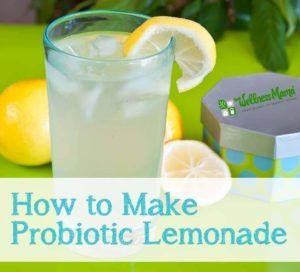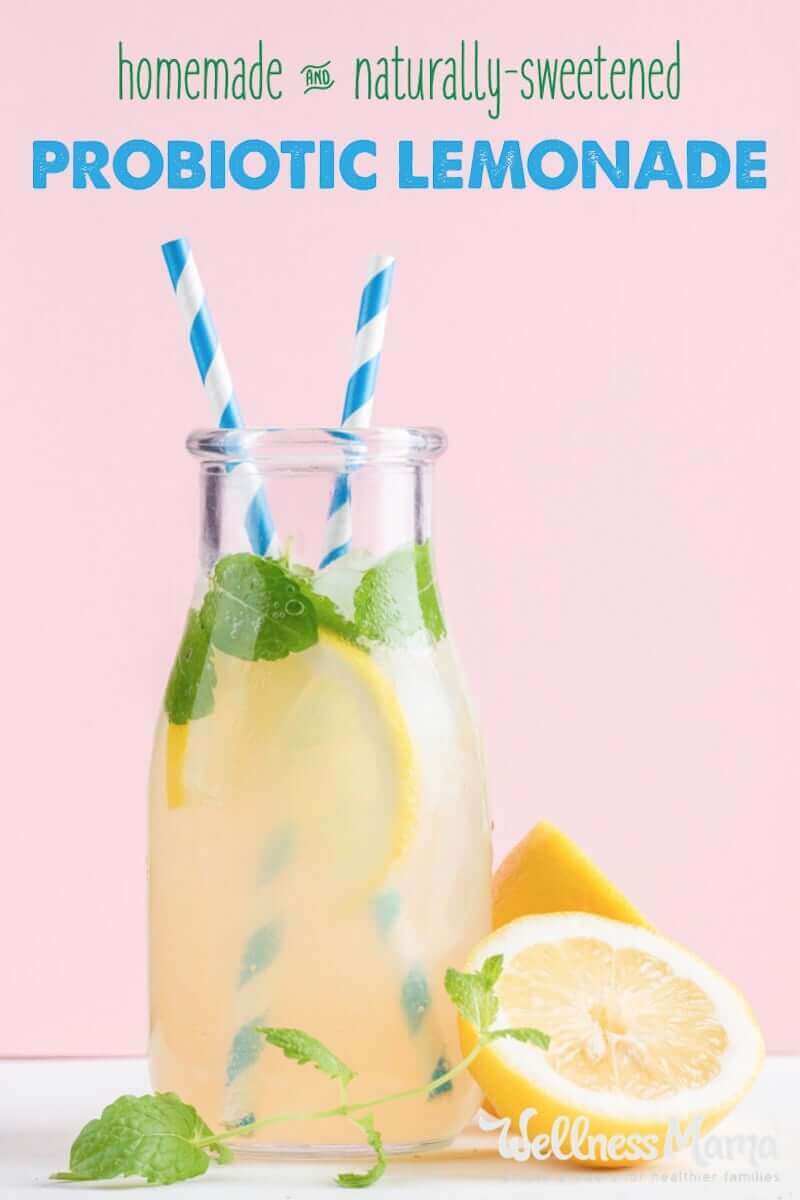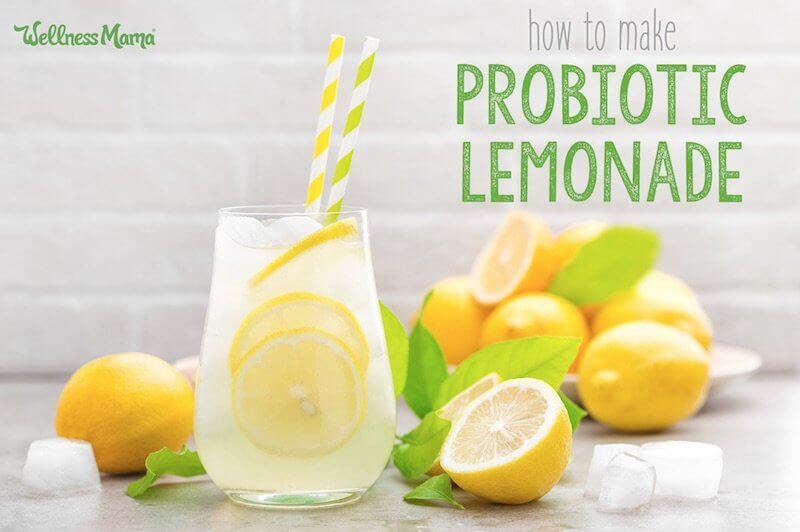Lemonade is the classic drink for a hot summer day, but the usual recipes are super sweetened and involve a lot of sugar! I love the flavor and effervescence of other fermented drinks, so why not probiotic lemonade? I looked it up to find it was a thing and decided to give it a try.
The result was wonderful, and thanks to the benefits of fermentation this lemonade contains little sugar and lots of healthy bacteria that is good for gut health.
Real Lemonade… With Probiotics!
I’m a big fan of water kefir and kombucha for their probiotics and beneficial enzymes. They do require specific cultures though, so if you don’t happen to have a SCOBY sitting around your kitchen, you are pretty much out of luck.
Luckily, there is an easy lacto-fermented drink that you can make with basic ingredients from your grocery store, and your kids will probably even drink it!
This probiotic lemonade is very easy to make and is ready in just a couple of days. As I mentioned, you don’t need any special ingredients like kefir grains or kombucha starter to make it (just the liquid from some strained yogurt).
As for the flavor, we all loved it (even the kids) and now keep a batch going through most of the summer months.

What Makes Probiotic Lemonade?
Full disclosure: this recipe does call for whey, which is basically the liquid drained off of yogurt. It’s packed with probiotics and easy to make if you start the night before. The recipe is here.
I get lots of requests for a dairy-free option for this recipe (or a way to make it if you just don’t have whey around). I haven’t tried to make a dairy-free version myself yet (will update when I do), but there are dairy-free yogurts or yogurt starters that may work. I’ve also heard of using kombucha or a ginger bug as a starter. Let me know if you try it!

Probiotic Lemonade Recipe
Servings
Ingredients
- ¾ cup sugar or sucanat
- 2½ to 3 quarts filtered water
- 10 lemons or limes juiced to make about 1 cup
- 1 cup whey here’s how to make it
Instructions
- In a gallon size glass jar, stir together sugar and just enough hot water to dissolve the sugar.
- Add the lemon juice and fill the jar about ¾ full with filtered water.
- Make sure the liquid is at room temperature and then add the whey.
- Cover tightly and let sit on the counter for 2-3 days.
- After 2-3 days, keep the lemonade in the refrigerator and drink 4-6 ounces per day. The flavor will continue to develop.
- Since the sugar ferments out, it is rather tart. Add a couple drops of stevia if it is too tart for you!
Nutrition
Notes
Feeling adventurous? Will you try this healthy drink? Tell me below!



Leave a Reply